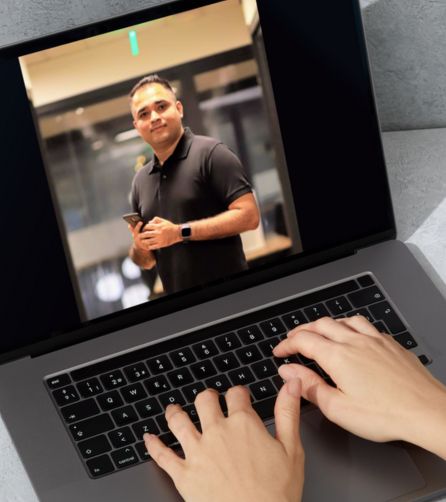Inventor’s Guide to Protecting Unique Ideas in 2025
Patent for New Inventions
Insights by Dr. Rahul Dev

Understand Practical Aspects
Understand the process of protecting new inventions

Insights by Dr. Rahul Dev

Understand the process of protecting new inventions

Protect your innovations across multiple countries and create strong patent portfolio to boost business valuation
Local and global brand protection through international trademark registrations
Extensive research and business writing for technical whitepapers and B2B content products
This article is about financial insights and patent strategy for inventors to protect their unique ideas in 2025 by filing international patents. The cost of patenting an idea across global jurisdictions with the escalating complexity of patent applications, particularly in artificial intelligence and software domains, has driven both government fees and attorney charges upward by approximately 5% compared to 2023 figures.
An inventor’s journey through the patent process involves multiple financial checkpoints, each requiring careful budgeting and strategic planning. The traditional view of patent costs focusing solely on filing fees no longer reflects reality, as patent attorney fees now constitute 50-70% of total expenses according to the 2025 American Intellectual Property Law Association survey. The integration of international protection strategies, maintenance obligations, and hidden administrative costs creates a financial landscape that demands thorough preparation and informed decision-making. The purpose of this comprehensive guide extends beyond simple fee enumeration to provide actionable strategies for managing the total cost of patent application process.
This article covers following topics:
Understanding Patent Basics and Major Cost Drivers
Patent Application Fees: A Breakdown by Stage
USPTO Patent Attorney and Patent Agent Fees
DIY Patent Filing vs. Professional Services

A patent represents a government-granted monopoly that provides inventors exclusive rights to make, use, and sell their innovations for a specified period. The United States patent system offers three primary categories of protection: utility patents for functional inventions and unique ideas, design patents for ornamental features, and plant patents for botanical varieties. The patent filing process for unique ideas encompasses multiple stages, from initial application submission through examination, potential appeals, and final issuance, with each phase carrying distinct fee requirements.
The patent journey of protecting unique ideas begins with a comprehensive prior art search to establish novelty, followed by detailed application drafting that articulates the invention’s unique features and claims. The examination phase involves USPTO review, potential office actions requiring responses, and negotiations over claim scope. The complexity of this multi-stage process directly influences the cost of patenting an idea, as more intricate inventions require extensive documentation, multiple claim sets, and potentially lengthy prosecution periods.
The primary cost drivers in patent applications include invention complexity, technology field, geographic scope, and entity size classification. A software patent incorporating AI algorithms and unique ideas comprising digital innovations typically demands higher investment than mechanical device patents due to eligibility challenges and drafting requirements. The USPTO’s updated 2025 guidance clarifies that AI inventions must demonstrate concrete hardware implementations or domain-specific applications to qualify for protection, adding layers of complexity to application preparation.
An applicant’s entity status significantly impacts fee structures, with the USPTO offering substantial discounts for small entities (50% reduction) and micro entities (75% reduction). The classification criteria consider factors including employee count, gross income thresholds, and previous patent filing history. A startup qualifying for micro entity status could reduce government fees from $16,000 to $4,000 for a standard utility patent, though professional service costs remain unaffected by entity size.
The USPTO’s fee structure encompasses multiple charges throughout the patent prosecution lifecycle, with each stage presenting distinct financial obligations. The initial filing fees for utility patents in 2024 stand at $1,820 for large entities, $728 for small entities, and $455 for micro entities. The fees cover basic filing, search, and examination components, though additional charges apply for claims exceeding standard limits or multiple dependent claims.
A provisional patent application for protecting unique ideas offers a cost-effective entry point, with filing fees of $320 for large entities and proportional reductions for smaller applicants. The provisional route allows inventors to establish an early filing date while deferring the substantial costs associated with formal utility applications. The strategy proves particularly valuable for startups seeking to validate market potential before committing to comprehensive patent protection investments.
The patent examination process introduces additional fee considerations, particularly when USPTO examiners issue rejections requiring response. An applicant faces potential charges for extensions of time ($220-$2,040), appeals to the Patent Trial and Appeal Board ($800-$2,240), and continued examination requests ($1,360 for first request). The cumulative impact of these procedural fees can add thousands to the patent cost, emphasizing the importance of quality initial submissions.
The issue fee represents the final government charge before patent grant, currently set at $1,200 for large entity utility patents. The timing of this payment typically occurs three months after allowance notification, providing applicants a brief window to assess commercial viability before final commitment. The post-grant publication fee of $300 completes the initial patent acquisition costs, though ongoing maintenance obligations commence shortly thereafter.
The professional services component of patent costs often exceeds government fees by substantial margins, reflecting the specialized expertise required for effective patent prosecution. The 2025 AIPLA survey reports average patent attorney fees ranging from $8,000 to $15,000 for straightforward mechanical inventions, with complex software or biotechnology patents commanding $15,000 to $25,000 or more. The geographic location of counsel significantly influences pricing, as major metropolitan firms typically charge 20-30% premiums over regional practitioners.
A patent attorney’s value proposition extends beyond mere document preparation to encompass strategic claim drafting, prior art analysis, and examiner negotiation skills. The investment in quality legal representation often yields dividends through broader patent scope covering all aspects of the unique ideas, faster prosecution timelines, and reduced office action responses. The correlation between attorney experience and patent grant rates remains strong, with seasoned practitioners achieving allowance rates exceeding 85% compared to 65% industry averages.
The fee structure options available from patent firms include hourly billing, fixed-fee arrangements, and hybrid models combining elements of both approaches. An hourly billing model suits complex prosecutions with uncertain scope, while fixed fees provide budget certainty for standard applications. The emerging trend toward value-based pricing aligns attorney compensation with successful outcomes, though such arrangements remain uncommon outside sophisticated corporate clients.
The decision to engage a patent attorney versus a registered patent agent involves balancing cost considerations with service scope requirements. A patent agent offers equivalent USPTO representation capabilities at potentially lower rates, though lacks the broader legal advisory capacity of attorneys. The distinction proves particularly relevant for startups requiring comprehensive IP strategy guidance beyond individual patent filings.
The allure of self-directed patent filing stems from potential cost savings, with inventors avoiding thousands in professional fees through DIY patent application approaches for initial protection of unique ideas. The USPTO provides extensive resources supporting pro se applicants, including filing guides, form templates, and examiner assistance programs. The availability of online filing systems and electronic communication channels has reduced procedural barriers that historically discouraged self-representation.
The success rates for DIY patent applications claiming unique ideas reveal significant challenges, with self-represented applicants achieving grant rates below 50% compared to 76% for attorney-filed applications. The disparity reflects multiple factors including claim drafting quality, response effectiveness to office actions, and strategic prosecution decisions. A poorly drafted DIY application often requires extensive amendments or continuation filings, ultimately exceeding the cost of initial professional representation.
The hidden costs of DIY filing extend beyond direct financial considerations to encompass opportunity costs and strategic disadvantages. An inventor spending hundreds of hours learning patent law and drafting applications diverts time from core business activities and product development. The risk of inadequate disclosure or narrow claims can permanently limit patent value, as subsequent broadening attempts face statutory restrictions and prior art challenges.
The emergence of affordable patent services offering hybrid solutions bridges the gap between full attorney representation and complete self-filing. The platforms typically provide guided application preparation, professional claim review, and limited prosecution support at prices 50-70% below traditional firm rates. The model suits inventors with straightforward mechanical inventions and budget constraints, though complex technologies still benefit from comprehensive attorney involvement. For global patent protection, the Patent Cooperation Treaty (PCT) streamlines multi-country filing before national phase entries to provide additional advantages to the inventors for bringing unique ideas to international markets.

As a business coach and thought leader, I cannot emphasize enough the importance of innovation, new software patents, mobile apps, and patents for tech companies, startups, and entrepreneurs. The world is rapidly evolving, and staying ahead of the curve is vital for success. Embracing technological advancements such as blockchain and AI can unlock unprecedented opportunities, streamline operations, and propel businesses into the future with competitive valuation via intangible assets.
Click Here for AI Startup Valuation Guide.
For instance, blockchain technology can revolutionize supply chain management and secure data sharing wherein innovative business models are explained to the audience via technical whitepapers, while AI can automate and optimize decision-making processes. Mobile apps are no longer just a luxury; they have become essential tools for engaging customers and offering personalized experiences. Furthermore, securing digital innovation patents is crucial for protecting intellectual property, fostering innovation, and maintaining a competitive edge. By investing in these areas, businesses can position themselves as industry pioneers and pave the way for a prosperous future after thoroughly conducting the due diligence and reviewing the legal opinion letters, which in case of digital assets can assist in determining the tokens as utility assets or coins as utility tokens before listing the assets at an exchange.
Our team of advanced patent attorneys assists clients with patent searches, drafting patent applications, and patent (intellectual property) agreements, including licensing and non-disclosure agreements. Advocate Rahul Dev is a Patent Attorney & International Business Lawyer practicing Technology, Intellectual Property & Corporate Laws. He is reachable at rd (at) patentbusinesslawyer (dot) com & @rdpatentlawyer on Twitter.
Quoted in and contributed to 50+ national & international publications (Bloomberg, FirstPost, SwissInfo, Outlook Money, Yahoo News, Times of India, Economic Times, Business Standard, Quartz, Global Legal Post, International Bar Association, LawAsia, BioSpectrum Asia, Digital News Asia, e27, Leaders Speak, Entrepreneur India, VCCircle, AutoTech).
Regularly invited to speak at international & national platforms (conferences, TV channels, seminars, corporate trainings, government workshops) on technology, patents, business strategy, legal developments, leadership & management.
Working closely with patent attorneys along with international law firms with significant experience with lawyers in Asia Pacific providing services to clients in US and Europe. Flagship services include international patent and trademark filings, patent services in India and global patent consulting services.
Global Blockchain Lawyers (www.GlobalBlockchainLawyers.com) is a digital platform to discuss legal issues, latest technology and legal developments, and applicable laws in the dynamic field of Digital Currency, Blockchain, Bitcoin, Cryptocurrency and raising capital through the sale of tokens or coins (ICO or Initial Coin Offerings).
Blockchain ecosystem in India is evolving at a rapid pace and a proactive legal approach is required by blockchain lawyers in India to understand the complex nature of applicable laws and regulations.